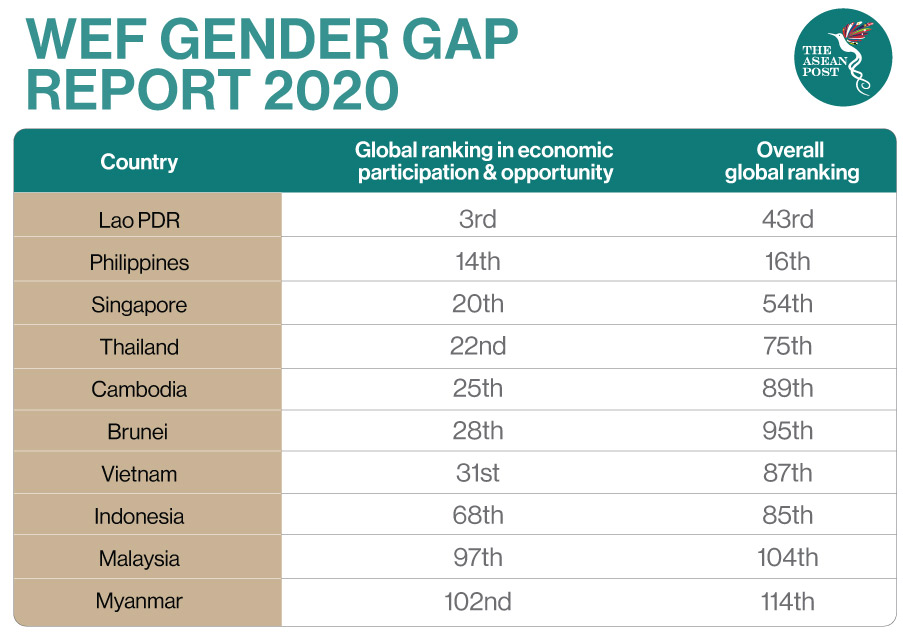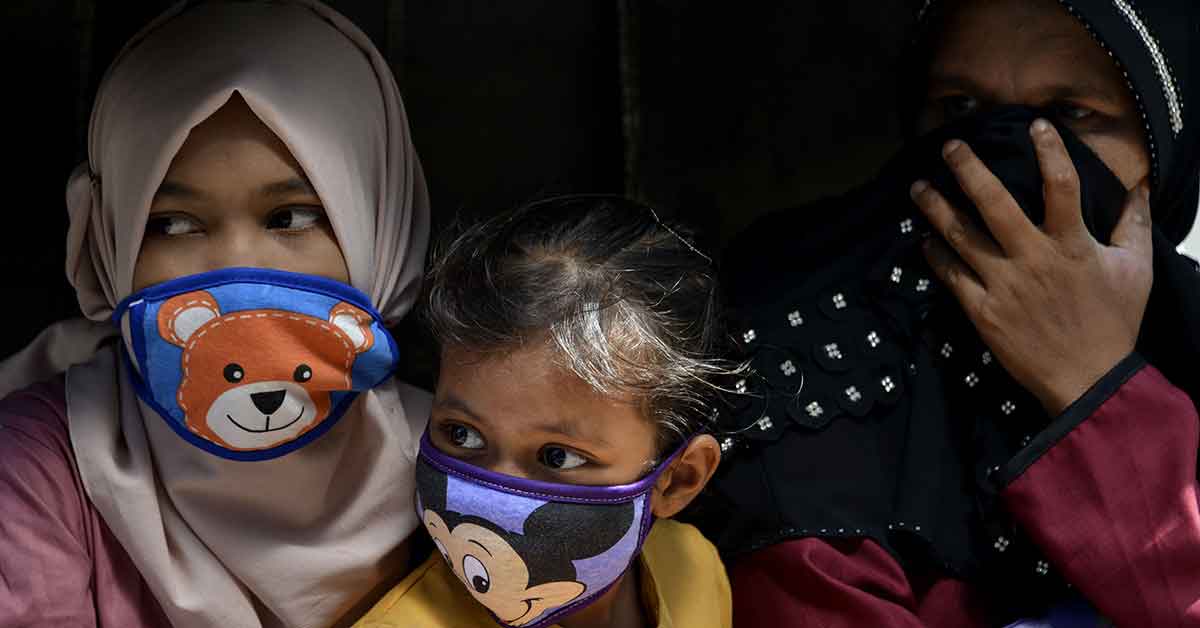ASEAN member states have a unique opportunity to meaningfully address the digital gender divide through their COVID-19 recovery plans. Early indications from COVID-19 research, as well as evidence from past epidemics, suggest that women, on average, are likely to suffer greater economic and social impact during the crisis.
That are several reasons for this.
Women represent the majority of health and social workers who are in a high-risk category due to significantly higher exposure to the virus; school closures induced by lock-downs automatically translate into an additional burden for women who are most likely to be responsible for child-care; and domestic violence, which affects women primarily, has increased due to lockdown measures in both, developed and developing countries.
In addition to these social problems triggered by the current public health crisis, women, especially in developing countries, are more likely to face adverse economic impacts during the pandemic. Women represent the majority of part-time and temporary workers – jobs that are most at risk in times of layoffs. In many developing countries women make up a large portion of the informal economy and informal workers are more affected by the lockdown as in most cases they cannot work remotely and are less protected by social safety nets and recovery plans that typically cover formal workers.
An additional downside is that in both developed and developing countries, women entrepreneurs face more difficulty in accessing credit, which is fundamental for the survival of their businesses in times of economic downturn. According to the Global Entrepreneurship Monitor 2018, more than 60 million women operate businesses in ASEAN, the majority of which are small and medium enterprises (SMEs).
Women And The Digital Economy
However, there is a critical and often overlooked reason why women may suffer more, not only now, but also during the post pandemic economic recovery phase – the lack of women’s participation in the digital economy. The COVID-19 emergency is catalysing the shift towards a digital economy. This can be seen as a silver lining as e-commerce is practical and ideal in times of social distancing. New convenient online services are being developed, while online teaching and learning can help regenerate the skills of workers in ASEAN economies.
But there is a sizeable risk as well. The transition to a digital economy must be inclusive. The post-COVID-19 transformation will most likely generate a higher demand for more digitally-related jobs and skills. This means that the ‘digital divide’ has the potential to become an even greater source of inequality. Those that are able to develop and activate the necessary digital skills will succeed while those who don’t will ultimately suffer.
As a group, most women unfortunately fall under the latter – those lacking digital access and skills. On average women use and access digital technology less often than men. For example, according to data from the International Telecommunication Union, a United Nations (UN) agency, the proportion of women using the internet was 48 percent in 2019 as opposed to 58 percent for men globally. This gap has been growing over the last few years in the Asia Pacific region. Some countries in Southeast Asia exhibit great gender disparities as recently shown by analysis by the Organisation for Economic Co-operation and Development (OECD) and Asia-Pacific Economic Cooperation (APEC). Indonesia, for example, has one of the largest digital gender divides among all APEC economies.
Women also lag behind men when it comes to their technological aptitude. Digital skills can be acquired during all education cycles and will become more necessary to access higher education levels and professional jobs. Today, a tiny percentage of women in both, developed and developing countries access and complete tertiary education programmes in STEM (science, technology, engineering and mathematics).

According to the World Economic Forum (WEF), only three percent of graduates from ICT (information and communications technology) educational programs around the world are women, five percent for courses in mathematics and statistics and eight percent in engineering, manufacturing and construction.
Fourth Industrial Revolution
These skills are often at the basis of tasks that are becoming key in the so called Fourth Industrial Revolution – problem solving skills, the ability to develop, adapt and supervise machine algorithms, digital interfacing capabilities, the ability to deal with robotics and automation. A combination of these skills is becoming increasingly important to allow all workers – male and female – to participate and excel in the digital economy.
As part of their COVID-19 recovery plans, governments should consider concrete actions to ensure a more inclusive digital economy. Policies and programmes can be revamped to empower women and girls to attain the necessary tools and to remove barriers that inhibit their full participation in the new digital world that is fast unfolding. While there are examples of programmes and policies in Southeast Asia that address the gender gap, they are still relatively limited and do no create widespread change. What is required is a more widespread and concerted set of activities specifically incorporated into these COVID-19 recovery plans.
Some of these actions can be taken at the regional level. For example, campaigns to increase awareness of education opportunities in these sectors for women and girls. These campaigns can be complemented by incentives for female students in STEM. Developing ad hoc regional programmes to support women entrepreneurship in tech including venture capital to be made available to women to create innovation start-ups (90% of these start-ups are owned by men). Create media awareness campaigns regarding gender stereotyping and discrimination which discourages girls and women from participating in the digital economy. Encourage donors to develop and fund these campaigns and programmes according to the needs and directives of regional officials with input from civil society.
At the national level, ASEAN member states can consider addressing the specific characteristics of women-led businesses and girls’ education opportunities when developing their COVID-19 recovery plans to make sure they get the same opportunities as men. Invest in STEM and ICT education programs for girls starting as early as primary school and create pathways and mechanisms to help women transition into STEM jobs. Improve gender disaggregated data to provide basis for fact-based policymaking. Develop post-COVID-19 national digital strategies that include addressing the gender divide; and making access to digital infrastructure and connectivity for women in less developed and rural areas of the region a priority.
ASEAN has a unique opportunity right now to quickly address the gender gap in the digital economy. It is vital that the region tap into all of its resources now to chart a course during the COVID-19 recovery phase in a manner that facilitates a smooth transition to the Fourth Industrial Revolution. Women make up 50 percent of the potential resources in terms of skilled workforce. Let’s make sure that they are part of it.
Related articles:
